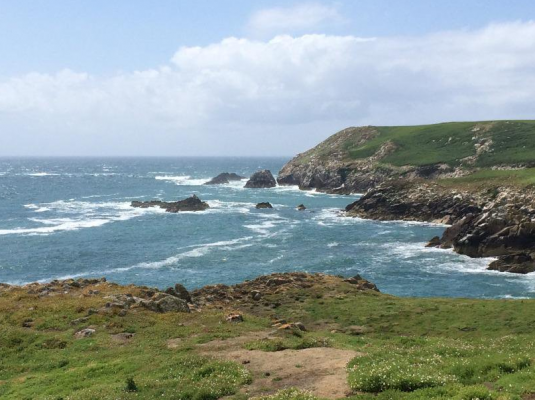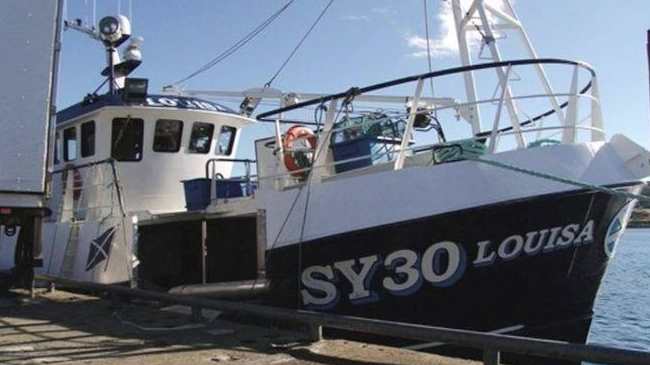MCIB: Jillian “overloaded” at time of fatal capsize
Francis Smith, from Salisbury, England died when the Jillian capsized while on a fishing trip to the Saltee Islands in Co Wexford, Ireland last August.
The Marine Casualty Investigation Board (MCIB) found that the NAB 21 dory, Jillian was overloaded when it capsized in the early evening of 29 August 2015.
The vessel was swamped by a wave between Great and Little Saltee in Co Wexford in Ireland during a family fishing trip. At the time, the weather conditions were favourable.
Ten people were on board, including 72-year-old Francis Smith from Salisbury. All of them were wearing personal floatation devices (PFD).
The 55-year-old skipper/owner was initially trapped in the wheelhouse of the Jillian, as his PFB inflated automatically. He managed to remove it before swimming free.
The MCIB said the majority of the passengers managed to climb onto the upturned hull of the 6.4 metre boat.
However, the passengers noticed that one person was missing; he had become trapped under the hull when the dory capsized. He was pulled clear by the other passengers.
It was not until five hours later, in darkness, that the Saltee Island Ferry found the Jillian.
The ferry’s skipper, who was also an RNLI lifeboat crew volunteer, had noticed the dory had not returned to Kilmore Quay.
He contacted a relative of the skipper/owner of the Jillian, who informed him the vessel was overdue.
The Marine Rescue Coordinating Centre (MRCC) Dublin was alerted.
The crews of the Kilmore Quay and Fethard lifeboats and Dunmore East and Kilmore Quay Coast Guard units all took part in the search, along with a R117 rescue helicopter and the Saltee Island Ferry.
The crew of the ferry heard shouting from the Jillian while using a search light along the south eastern shore of the Great Saltee.
All ten casualties were picked up by the ferry.
Francis Smith, 72, was transferred to the Kilmore Quay lifeboat and then airlifted by R117 to Waterford Hospital where he was pronounced dead.
The other nine casualties were brought ashore at Kilmore Quay, taken to Wexford General Hospital by ambulance and were later released.
In the report, the MCIB noted that there was no handheld VHF or EPIRB on board.
“There was a fixed VHF set in the wheelhouse, but the vessel capsized very quickly and the owner/skipper did not have the opportunity to use it to broadcast a MAYDAY message. There was no handheld VHF or EPIRB on-board,” stated the MCIB.
Although a flare was on board, none of the group knew how to use it.
The MCIB said that as it was not recovered, it is not known if the flare was in date, or had instructions for use.
The report also concluded that the owner/skipper did not know the maximum number of people that the vessel should carry.
“All skippers of vessels should be aware of the load capacity of their vessels despite the fact that, in this instance, this vessel was built before compliance with the RCD (Recreational Craft Directive) became mandatory. There was no requirement for the maker’s name plate to show information such as the maximum number of people it was rated to carry,” stated the MCIB.
It is also recommending that the Minister for Transport updates the Code of Practice for The Safe Operation of Recreational Craft and consider including the use of EPIRBS for a wider range of vessels.
The MCIB is also urging that a Marine Notice is issued to remind boat owners that they should comply with the code of practice.
MAIB: Deaths of eight crew on Cemfjord “could have been avoided”
The Marine Accident Investigation Branch (MAIB) has made a series of safety recommendations following the capsizing and sinking of the…
MAIB: Poorly discarded cigarette “probable” cause of trawler fire
The Marine Accident Investigation Branch (MAIB) has now released its report into the fire and sinking of the prawn trawler,…
Lifejackets worn in tragic Louisa accident, in which three men died, also used by Caledonian MacBrayne, company confirms
Caledonian MacBrayne has requested the advice of the MCA after confirming that it also uses the lifejackets worn by the…
Mechanical failure blamed for Hythe Pier ferry crash
An investigation has concluded that mechanical failure within the Uriah Heap’s hydraulic circuit resulted in the Southampton-Hythe ferry crashing into…













